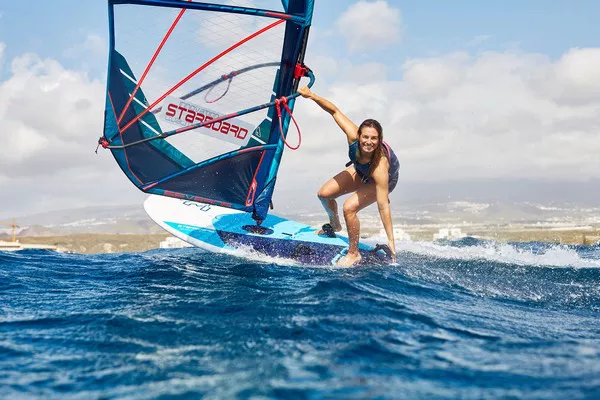Wake surfing, a captivating blend of surfing and wakeboarding, offers enthusiasts a unique opportunity to glide atop the water’s surface in harmony with the boat’s wake. Unlike traditional water sports where the rider is towed behind the boat, wake surfing allows individuals to harness the energy of the wake, creating a continuous wave perfect for riding. In this comprehensive guide, we will delve into the fundamentals of wake surfing, providing beginners with the knowledge and skills needed to embark on their journey of mastering this exhilarating sport.
Wake Surfing Basics:
1. What is wake surfing?
Wake surfing is a water sport that involves riding the wake produced by a boat while being towed at a relatively low speed. Unlike wakeboarding, where the rider is attached to the boat via a tow rope, wake surfing relies on the natural propulsion of the boat to generate a surfable wave. This unique approach allows riders to experience the sensation of surfing without the need for ocean waves.
2. Equipment Needed:
Before hitting the water, it’s essential to gather the necessary equipment to ensure a safe and enjoyable wake surfing experience. The primary gear includes:
Wake Surfboard: The wake surfboard is the most critical piece of equipment for wake surfing. These specialized boards come in two main styles: surf style and skim style. Surf-style boards are typically larger, with more buoyancy, making them ideal for beginners due to their stability and ease of use. Skim-style boards, on the other hand, are smaller and more maneuverable, catering to advanced riders looking to perform tricks and aerial maneuvers.
Life Jacket: A properly fitted life jacket is a non-negotiable safety item for wake surfing. Not only does it provide buoyancy in the water, but it also ensures the rider’s safety in case of falls or accidents. Choose a Coast Guard-approved life jacket that fits snugly and allows for unrestricted movement.
Tow Rope: The tow rope is used to tow the rider into the wave and can vary in length depending on the boat’s setup and rider preferences. Opt for a high-quality tow rope with minimal stretch for maximum control and stability while surfing.
3. Boat Setup:
The ideal boat setup for wake surfing includes a wake-specific hull design and a ballast system to create a large, surfable wave. The boat’s speed typically ranges from 9 to 14 miles per hour, depending on the rider’s weight and skill level. Additionally, the boat’s wake shape can be adjusted by adding weight to one side to create a longer and cleaner wave, ideal for beginners to practice on.
Getting Started:
1. Starting Position and Getting Up on the Board:
Positioning: Begin by lying on your back in the water with your feet resting on the wake surfboard. Hold the tow rope with both hands, keeping your arms straight and slightly bent at the elbows.
Initiating the Pull: As the boat accelerates, gradually shift your weight forward, allowing the buoyancy of the board to lift you out of the water. Keep your knees bent and your gaze focused on the boat.
Standing Up: Once you feel the board rising beneath you, bring your feet underneath your body into a crouched position. Keep your knees bent and your weight centered over the board. Use the tow rope for support as you slowly rise to a standing position.
2. Finding Balance and Letting Go of the Rope:
Centering Your Weight: Focus on keeping your weight centered and distributed evenly between your feet. Avoid leaning too far forward or backward, as this can cause instability and lead to falls.
Releasing the Rope: Gradually release tension from the tow rope as you gain confidence and stability on the board. Allow the boat’s momentum to carry you forward as you ride along the wave.
3. Basic Maneuvers and Riding Techniques:
Carving: Carving is a fundamental maneuver in wake surfing that involves turning the board by shifting your weight from one edge to the other. To carve effectively, lean into the turn with your shoulders and hips while keeping your eyes focused in the direction you want to go.
Pumping: Pumping is a technique used to generate speed by shifting your weight back and forth on the board in a rhythmic motion. Practice shifting your weight between your toes and heels to maintain momentum and stay in the “sweet spot” of the wave.
Safety Tips:
1. Importance of Life Jackets:
Wearing a properly fitted life jacket is crucial for wake surfing, regardless of your swimming ability. In the event of a fall or collision, a life jacket provides buoyancy and keeps you afloat until help arrives.

